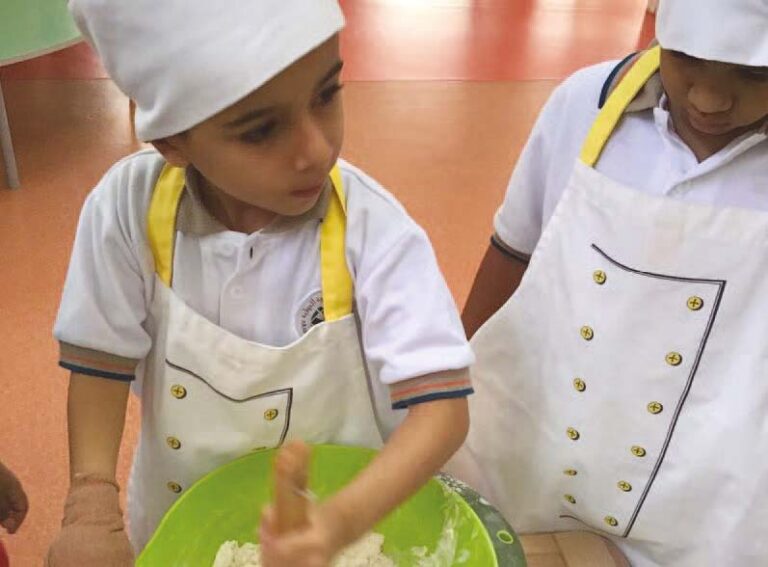Believe it or not, your kitchen is just like a science lab. When baking and cooking, you learn to use your senses to understand the scientific changes that happen to specific ingredients. You also get to practice using different equipment and following complex instructions and techniques, all while putting your math and language skills to use.

In the kitchen, you get to be creative and experiment, just like a science lab. Best of all, you will have fun and get to eat your final product as a reward and hopefully build some confidence along the way! So put on an apron, prepare your senses and let’s get cooking!
Before you start
- Get parental permission (and supervision if necessary).
- Be very careful when you use the kitchen utensils.
- Plan your recipe but don’t be afraid to experiment.
- Always put on oven mitts before you pick up anything hot—especially when you are lifting things into or out of your oven.
- Always wash your hands before you start cooking and stay as clean as you can. Wear an apron and a hat to protect your clothes and keep your hair out of the way.
- Keep your workspace clean.
Try this at home!
- Baking is a science. Just like in a lab, when you change ingredients, you change the final outcome. Select a cookie recipe online or from a cookbook and try this experiment:
- Follow the recipe exactly as it is written. Take notes of how the cookies taste, their shape and how long they take to bake. Make the recipe again but use half of the amount of sugar in the recipe.
- What happened to the second batch of cookies?
- Are they the same shape as the first batch?
- How do they taste?
- Did they bake faster or slower than the first batch?
- How does the color compare to the first batch?
Food for thought
- What do you think will happen if you made the recipe again but doubled the eggs, baking soda or baking powder?
- What do your senses tell you about the different batches? How do they look? Smell? Is the texture the same?
- If you have five family members and want to give them each six cookies, how many cookies do you need to make?
Did you know?
- When heated, the protein in eggs rearrange themselves to form a solid. This adds structure, shape and taste to the cookie.
- Flour also contains protein. When it is heated it forms gluten— a web-like molecular structure that makes baked goods chewy or stretchy.
- Sugar does more than just make cookies taste delicious. It also binds to water to keep baked goods moist so they don’t dry out too fast. And that beautiful brown color that forms on the bottom of a cookie? That’s the sugar carmelizing just like in—you guessed it—caramel.
ASMA BENJEDDOU AND MANAL EL DAHWISH TEACH PRE-K AT ARAB INTERNATIONAL ACADEMY. THEY BELIEVE THAT ALL CHILDREN ARE EXPLORERS AND RISK TAKERS BY NATURE. ASMA AND MANAL ENJOY HELPING CHILDREN GROW AS INDEPENDENT LEARNERS IN THE HIGHLY EQUIPPED SCHOOL KITCHEN AT AIA.